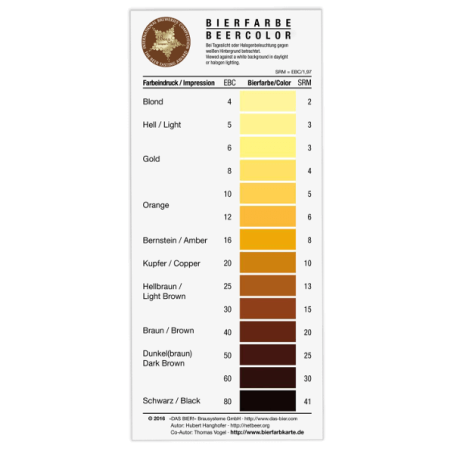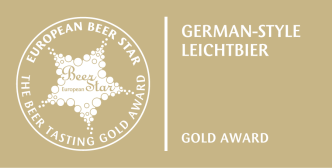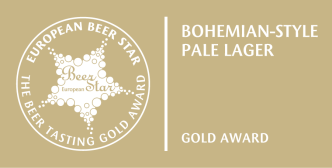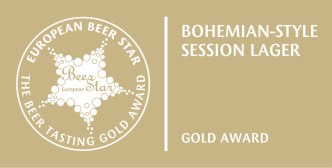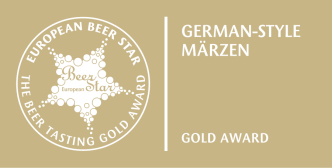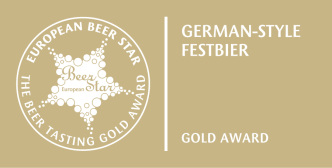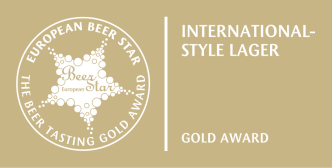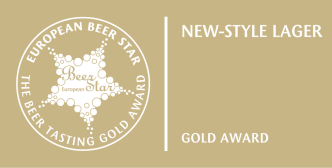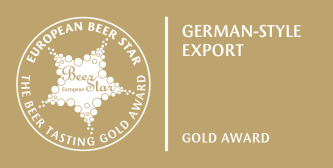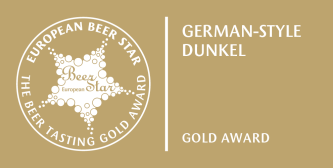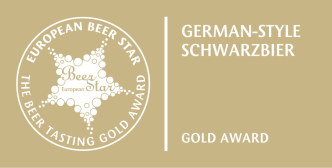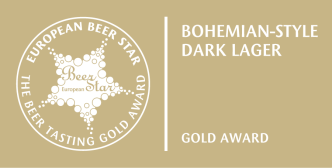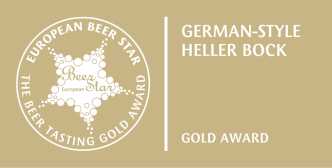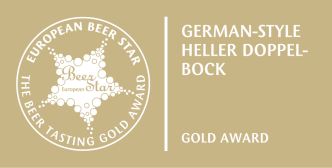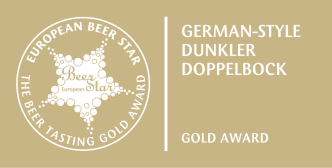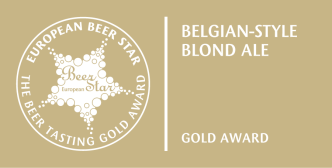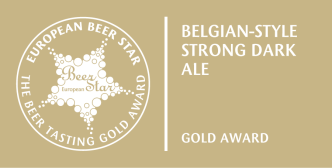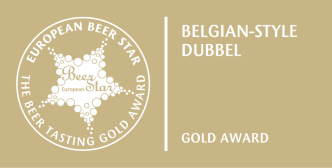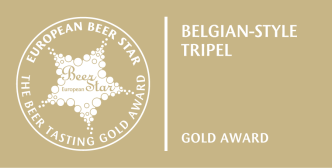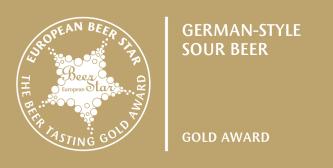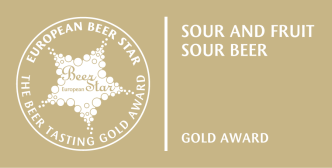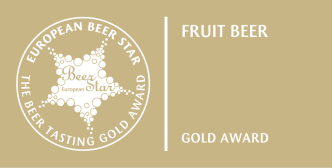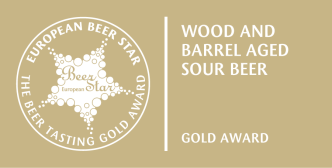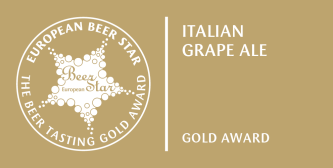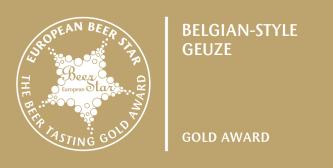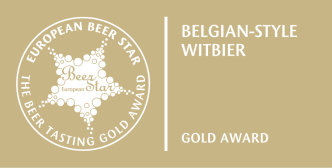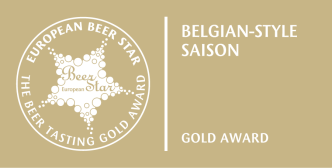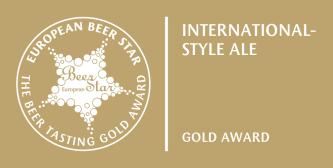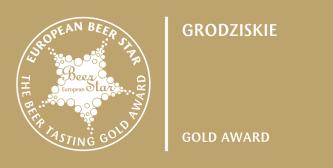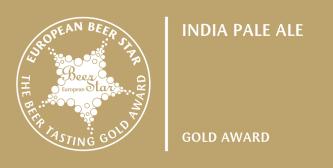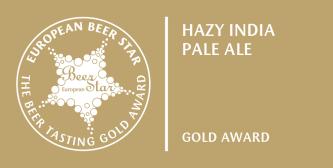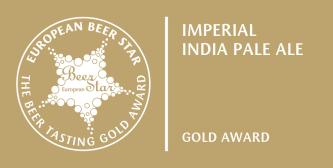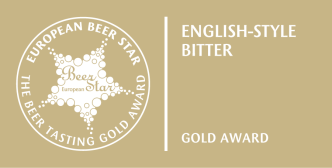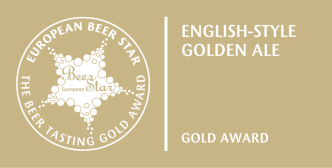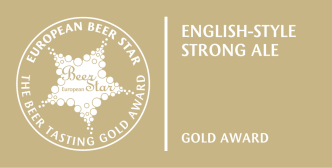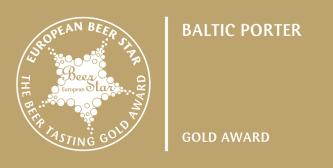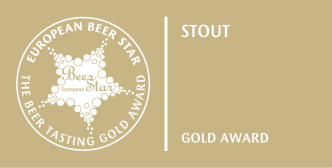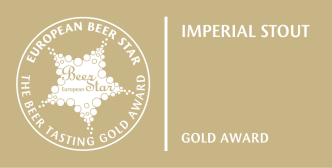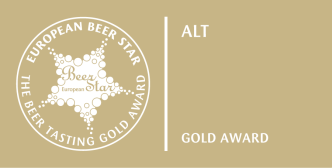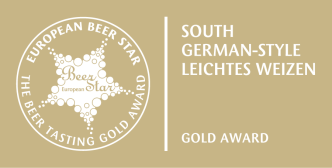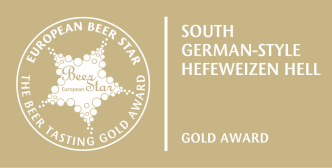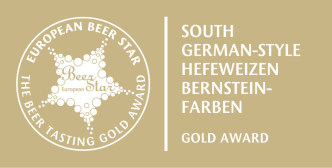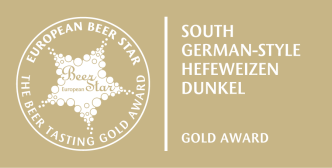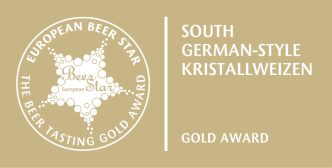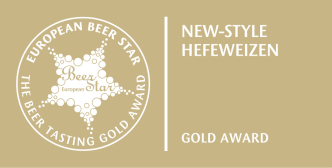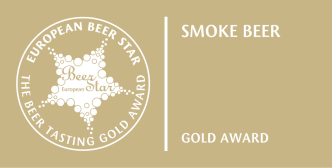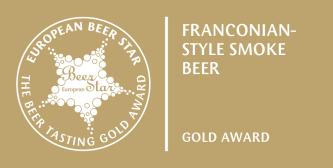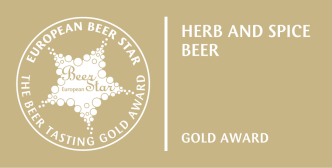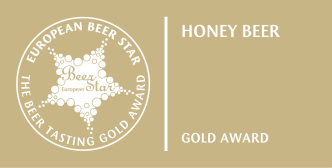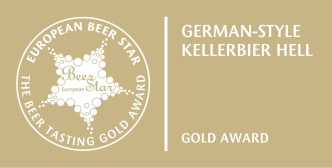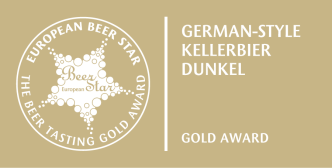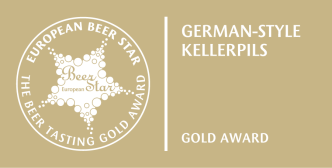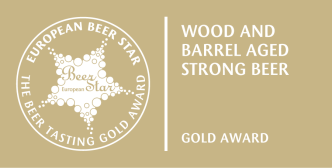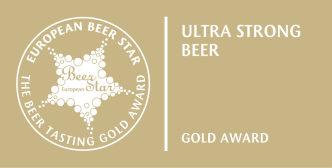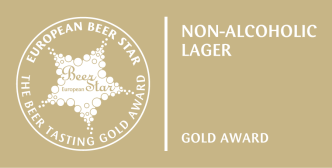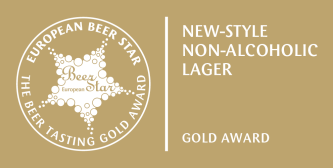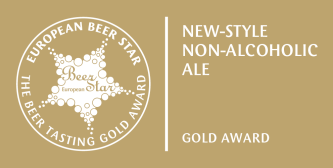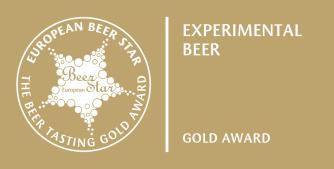Categories and Beer Styles of the European Beer Star
Beer Styles changing with the times
The world is becoming more digital and is in a constant state of flux. The beer market is also subject to this change. That's why the categories and beer styles of the European Beer Star are adapted every year to current consumer expectations.
The European Beer Star is dedicated to promoting beer culture. That's why we describe selected beer styles in more detail in each issue of our Beer Star News. The European Beer star pays special attention to beer styles originating from Europe.
Register up to 3 beers per category!
Your beer fits into one of the categories described?
Then compete with the best beers in the world!
The color of the beers is decisive at European Beer Star. In some categories, a non-specific colour for the beer style of the beer can lead to exclusion by the tasters. The beer will be judged as out-of-style. The beer colour chart of European Beer Star is decisive for the decision of the tasters.
In order to prevent your beer from being classified as out-of-style due to deviating colour, you can use the adjacent beer colour chart to determine the colour of your beers and compare it with the category descriptions.
Category descriptions convenient for download
Category 1 German-Style Leichtbier
Analytics
| Original gravity | 6,0 - 9,5 °Plato |
| Apparent extract | 1,5 - 2,5 °Plato |
| Alcohol | 2,0 - 3,0 % by weight |
| 2,0 - 3,5 % by volume | |
| Bitterness | 14 - 28 IBU |
Description
- Bottom fermented
- Light body
- Malt character: low to medium
- Hop bitterness: low to medium
- Hop flavour and aroma: low to medium
- No fruity esters or Diacetyl
- Turbidity allowed
Typical representatives
- Session Pils
- Session Helles
Category 2 German-Style Pilsner
Analytics
| Original gravity | 11,0 - 12,9 °Plato |
| Apparent extract | 1,5 - 3,0 °Plato |
| Alcohol | 3,6 - 4,3 % by weight |
| 4,0 - 5,5 % by volume | |
| Bitterness | 25 - 50 IBU |
Description
- Bottom fermented
- Colour: light straw to golden
- Hop bitterness: high
- Hop flavour and aroma: moderate, fine, quite obvious
- However, the aroma may not be characterized by the utilization of hops by dry hopping
- Attenuation degree: high
- Body: medium to light
- Flavour and aroma: little residual sweetness
- No fruity esters or Diacetyl
- Dense and rich foam
- Beer is filtered
- No chill-haze
Category 3 Bohemian-Style Pale Lager ("Ležák")
Analytics
| Original gravity | 12,0 - 13,9 °Plato |
| Apparent extract | 2,5 - 4,5 °Plato |
| Alcohol | 4,4 - 5,0 % by weight |
| 5,0 - 6,4 % by volume | |
| Bitterness | 20 - 40 IBU |
Description
- Bottom fermented
- Colour: rich yellow to deep gold
- Distinguishable body (more than German-Style Pilsner)
- Hop bitterness: high and balanced
- Hop flavour and aroma: moderate
- Malty, slightly sweet, medium body
- Diacetyl: low amount acceptable
- Dense and rich foam
- Turbidity allowed
Typical representatives
- Bohemian-Style Pilsner
- Bohemian Style Lager
- Světlé Lezak
Category 4 Bohemian-Style Session Lager ("Výčepní")
Analytics
| Original gravity | 7,0 - 11,9 °Plato |
| Apparent extract | 1,8 - 3,0 °Plato |
| Alcohol | 2,8 - 4,5 % by weight |
| 3,5 - 5,2 % by volume | |
| Bitterness | 20 - 40 IBU |
Description
- Bottom fermented
- Colour: golden to dark brown
- A lighter, refreshing everyday version of a Bohemian Lager with less intensity
- Due to the lower original gravity, less body and alcohol
- A pale colour version (Světlé) has less sweetness, while the dark version (Tmavé) has clearly sweet and dark malt flavours.
- Hop bitterness: low to medium and very balanced
- Fine and restrained hop aromas
- Small amounts of Diacetyl permitted
- Very good and dense foam
- Turbidity is allowed
Typical representatives
- Světlé Výčepní
- Tmavé Výčepní
- Polotmavé Výčepní
Category 5 German-Style Märzen
Analytics
| Original gravity | 13,0 - 14,0 °Plato |
| Apparent extract | 3,0 - 5,0 °Plato |
| Alcohol | 4,3 - 5,0 % by weight |
| 5,2 - 6,7 % by volume | |
| Bitterness | 18 - 28 IBU |
Description
- Bottom fermented
- Colour: amber hue
- Full-bodied. Emphasis on malt, sweet maltyness
- Malt character: slightly roasted rather than strongly caramel (though a low level of light caramel is acceptable)
- Flavour and aroma: slight bread or biscuit like malt character
- Hop flavour and aroma: low but noticeable and clean
- No fruity esters or Diacetyl
- Beer is filtered
- No chill-haze
Category 6 German-Style Festbier
Analytics
| Original gravity | 13,0 - 14,5 °Plato |
| Apparent extract | 3,0 - 5,0 °Plato |
| Alcohol | 4,3 - 5,0 % by weight |
| 5,2 - 6,7 % by volume | |
| Bitterness | 18 - 35 IBU |
Description
- Bottom fermented
- Colour: golden
- Body: medium
- Malt character: clean, slightly sweet
- Flavour and aroma: slight bread or biscuit like malt character
- Hop bitterness: clean
- Hop flavour and aroma: low but noticeable
- No fruity esters or Diacetyl
- Beer is filtered
- No chill-haze
Category 7 Germany-Style Helles
Analytics
| Original gravity | 11,0 - 11,9 °Plato |
| Apparent extract | 2,0 - 3,0 °Plato |
| Alcohol | 3,7 - 4,1 % by weight |
| 4,5 - 5,2 % by volume | |
| Bitterness | 15 - 25 IBU |
Description
- Bottom fermented
- Colour: straw to golden
- Bitterness: low to medium
- Body: medium, emphasis on malt
- Low levels of sulphur components caused by yeast are acceptable
- Hop bitterness and flavour is low and balanced with the malt in order to keep the typical characteristics
- No caramel character
- No fruity esters or Diacetyl
- Beer is filtered
- No chill-haze
Category 8 Austrian-Style Märzen
Analytics
| Original gravity | 11,4 - 12,2 °Plato |
| Apparent extract | 1,5 - 2,9 °Plato |
| Alcohol | 3,7 - 4,2 % by weight |
| 4,7 - 5,4 % by volume | |
| Bitterness | 17 - 25 IBU |
Description
- Bottom fermented
- The use of up to 25 percent unmalted barley or other adjuncts is permitted, but usually not common. The Austrian-Style Märzen tends to have slightly more hop character. It is less malty and slightly fruity compared to the Bavarian Helles
- Colour: golden
- Bitterness: low
- Body: medium, malty
- Hop bitterness and flavour is low and balanced with the malt in order to keep the typical characteristics
- No caramel character
- No Diacetyl notes
- Beer is filtered
- No chill-haze
Category 9 International-Style Lager
Analytics
| Original gravity | 9,6 - 11,5 °Plato |
| Apparent extract | 2,0 - 3,0 °Plato |
| Alcohol | 3,2 - 3,9 % by weight |
| 3,6 - 4,7 % by volume | |
| Bitterness | 10 - 15 IBU |
Description
- Bottom fermented
- Colour: straw yellow to golden
- Bitterness: very low
- Body: light to medium, slightly malty
- Taste: neutral, slightly sweet
- No caramel character
- No fruity esters or Diacetyl
- Beer is filtered
- No chill-haze
Category 10 New-Style Lager
Analytics
| Original gravity | 7,0 - 15,9 °Plato |
| Apparent extract | 2,0 - 3,5 °Plato |
| Alcohol | 2.0 - 6,2 % by weight |
| 2,5 - 7,0 % by volume | |
| Bitterness | 25 - 70 IBU |
Description
- Bottom fermented
- Colour: straw yellow to black
- Bitterness: high
- Hop aroma: intense
- The overall aroma should be characterized by hop aroma; the origin of the hop varieties has no restriction. The use of hops in the cold part of the brewery ("dry hopped") is expressly desired
- Degree of fermentation: high
- Body: slim to medium
- Low residual sweetness
- No Diacetyl
- Turbidity allowed
Typical representatives
- Italian-Style Pilsner
- Hoppy Lager
- India Pale Lager
In order to facilitate sensory evaluation, it is necessary for the brewery to provide additional information about the beer when submitting the entry:
- Indication of the type of beer
Category 11 German-Style Export
Analytics
| Original gravity | 12,0 - 14,0 °Plato |
| Apparent extract | 2,3 - 3,5 °Plato |
| Alcohol | 4,0 - 4,8 % by weight |
| 5,0 - 6,7 % by volume | |
| Bitterness | 18 - 30 IBU |
Description
- Bottom fermented
- Colour: straw to deep golden
- Hop bitterness: medium
- Hop flavour and aroma: noticeable but low
- Malt character: slightly sweet, no caramel
- Body: medium
- No fruity esters or Diacetyl
- Beer is filtered
- No chill-haze
Category 12 German-Style Dunkel
Analytics
| Original gravity | 11,0 - 14,0 °Plato |
| Apparent extract | 2,0 - 4,0 °Plato |
| Alcohol | 3,5 - 4,7 % by weight |
| 4,5 - 5,9 % by volume | |
| Bitterness | 15 - 25 IBU |
| Colour | 40 - 60 EBC |
Description
- Bottom fermented
- Colour: medium to dark brown
- Malt aroma: strong
- Hop bitterness: clean and balanced
- A classic German-Style Dunkel should have chocolate-like, bread- or biscuit-like aroma caused by the use of Munich dark malt. A small percentage of chocolate or roast malts may be used
- Hop flavour and aroma: low but noticeable
- No fruity esters or Diacetyl
- Beer is filtered
- No chill-haze
Category 13 German-Style Schwarzbier
Analytics
| Original gravity | 11,0 - 13,0 °Plato |
| Apparent extract | 2,0 - 4,0 °Plato |
| Alcohol | 3,5 - 4,7 % by weight |
| 4,5 - 5,9 % by volume | |
| Bitterness | 18 - 30 IBU |
| Farbe | > 60 EBC |
Description
- Bottom fermented
- Colour: dark brown to almost black
- Aroma: light to medium roasted notes desired, as well as light coffee-like aromas and licorice notes
- Malt flavour and aroma: clean, low sweetness
- Hop bitterness: low to medium
- Hop flavour and aroma: low but noticeable
- No fruity esters or Diacetyl notes
Category 14 Bohemian-Style Dark Lager
Analytics
| Original gravity | 10,0 - 13,0 °Plato |
| Apparent extract | 2,0 - 4,5 °Plato |
| Alcohol | 3,1 - 4,4 % by weight |
| 4,0 - 5,8 % by volume | |
| Bitterness | 20 - 30 IBU |
| Farbe | > 60 EBC |
Description
- Bottom fermented
- Colour: almost black to deep black
- Malt: roast malt with the characteristic bitterness
- Malt flavour and aroma: clean, slightly sweet
- Hop bitterness: low to medium
- Hop flavour and aroma: slightly noticeable
- No fruity esters
- Diacetyl: low amount acceptable
Typical representatives
- Bohemian-Style Dark Lager
- Tmavé Ležák
Category 15 German-Style Heller Bock
Analytics
| Original gravity | 16,0 - 17,9 °Plato |
| Apparent extract | 3,0 - 5,5 °Plato |
| Alcohol | 5,2 - 6,4 % by weight |
| 6,2 - 8,0 % by volume | |
| Farbe | < 29 EBC |
Description
- Bottom fermented
- Colour: straw yellow to light brown
- Maibock should be registered in this category
- Malt aroma and flavour: noticeable
- Body: full to medium, high alcohol content
- Hop bitterness: medium
- Hop flavour and aroma: low to medium
- Fruity esters: low
- Diacetyl: not noticeable or very low
Typical representatives
- Maibock
Category 16 German-Style Dunkler Bock
Analytics
| Original gravity | 16,0 - 17,9 °Plato |
| Apparent extract | 3,5 - 6,0 °Plato |
| Alcohol | 5,0 - 6,4 % by weight |
| 6,2 - 8,0 % by volume | |
| Farbe | ≥ 30 EBC |
Description
- Bottom fermented
- Colour: light brown to black
- Malt character: dominant but not too sweet
- Full body
- No astringent roast malt character
- High alcohol content
- Hop bitterness and flavour: rather low
- Fruity esters: low to medium
Please note the colour- and alcohol ranges in this category!
Barrel-aged representants must be submitted in the category Wood and Barrel Aged Strong Beer.
Category 17 German-Style Heller Doppelbock
Analytics
| Original gravity | 18,0 - 22,0 °Plato |
| Apparent extract | 3,5 - 5,5 °Plato |
| Alcohol | 5,6 - 6,8 % by weight |
| 6,5 - 10,0 % by volume | |
| Farbe | < 29 EBC |
Description
- Bottom fermented
- Colour: straw yellow to light brown
- Malt character: dominant with a notable body
- Strong alcohol aroma
- Hop bitterness and flavour: medium
Fruity esters: low to medium
Please note the colour- and alcohol ranges in this category!
Barrel-aged representants must be submitted in the category Wood and Barrel Aged Strong Beer.
Category 18 German-Style Dunkler Doppelbock
Analytics
| Original gravity | 18,0 - 22,0 °Plato |
| Apparent extract | 3,5 - 5,5 °Plato |
| Alcohol | 5,6 - 6,8 % by weight |
| 6,5 - 10,0 % by volume | |
| Farbe | ≥ 30 EBC |
Description
- Bottom fermented
- Colour: light brown to black
- Malt character: dominant with sweet notes
- No astringent roasted malt character
- Full body
- Strong alcohol aroma
- Hop bitterness and flavour: almost pronounced
- Fruity esters: low to medium
Please note the colour- and alcohol ranges in this category!
Barrel-aged representants must be submitted in the category Wood and Barrel Aged Strong Beer.
Category 19 Belgian-Style Blond Ale
Analytics
| Original gravity | 11,0 - 15,0 °Plato |
| Apparent extract | 2,0 - 3,5 °Plato |
| Alcohol | 3,5 - 5,0 % by weight |
| 4,5 - 6,5 % by volume | |
| Bitterness | 15 - 40 IBU |
Description
- Top fermented
- Colour: Light to deep golden
- Hop bitterness, flavour and aroma: low but noticeable
- Body: light to medium, slight malt aroma
- Low to medium fruity esters
- Low levels of phenolic notes by means of fermentation by-products are allowed but not mandatory
- Low caramel flavour allowed
- No Diacetyl
- Light turbidity allowed due to bottle fermentation
Category 20 Belgian-Style Strong Blond Ale
Analytics
| Original gravity | 15,0 - 23,0 °Plato |
| Apparent extract | 2,0 - 5,0 °Plato |
| Alcohol | > 5,0 % by weight |
| > 6,5 % by volume | |
| Bitterness | 20 - 50 IBU |
| Colour | < 29 EBC |
Description
- Top fermented
- Color: straw yellow to light brown
- Hop bitterness and hop aroma: low to pronounced
- Body and character: rather light body in relation to original gravity and alcohol content. Alcohol content is high, but tends not to be prominent and the character of the beer should be rather elegant despite the richness.
- Recognizable and multi-layered fruit aromas, which mostly come from hops but can also originate from the Belgian ale yeast.
- Small to moderate amounts of phenolic notes from fermentation by-products are allowed.
- Herbal additions such as coriander are sometimes used, but are not traditionally common in this style of beer and therefore, if present, should not dominate.
- Little to medium malt character
- No Diacetyl
Category 21 Belgian-Style Strong Dark Ale
Analytics
| Original gravity | 15,0 - 25,0 °Plato |
| Apparent extract | 2,5 - 6,0 °Plato |
| Alcohol | > 5,0 % by weight |
| > 6,5 % by volume | |
| Farbe | ≥ 30 EBC |
| Bitterness | 15 - 50 IBU |
Description
- Top fermented
- Colour: dark amber to black
- Hop bitterness and flavour: low to high
- Body and character: pronounced and full bodied with a noticeably high alcohol content. A distinct sweet malt aroma with caramel, chocolate and roasted aromas is typical as are aromas of dried fruit. Typical yeast aromatics from Belgian yeast strains should be recognizable. Intense and alcohol-aromatic finish.
- Low levels of phenolic notes from fermentation by-products are allowed
- No or only very little Diacetyl notes
Category 22 Belgian-Style Dubbel
Analytics
| Original gravity | 13,0 - 18,0 °Plato |
| Apparent extract | 2,5 - 4,0 °Plato |
| Alcohol | 5,0 - 6,7 % by weight |
| 6,0 - 8,0 % by volume | |
| Bitterness | 20 - 40 IBU |
Description
- Top fermented
- Colour: dark-amber to dark-brown
- Medium to full body
- Malt character: sweet, nutty, chocolate-like and roasted notes
- Can have a dry finish, or be slightly sweet, but the sweetness should not be cloying
- Hop aroma: medium
- Bitterness: medium
- Hop flavour: low
- Diacetyl: low or absent
- Low to medium levels of fruity esters (e.g. banana)
- Low to medium levels of phenolic notes by means of fermentation by-products are acceptable but not mandatory
- Dense and mousse-like foam
- Traditional Dubbels are bottle conditioned and may have a slight yeast haze
Category 23 Belgian-Style Tripel
Analytics
| Original gravity | 16,0 - 22,0 °Plato |
| Apparent extract | 2,5 - 4,0 °Plato |
| Alcohol | 5,5 - 8,0 % by weight |
| 7,0 - 10,0 % by volume | |
| Bitterness | 20 - 40 IBU |
Description
- Top fermented
- Colour: light yellow to amber
- Complex character
- A mild yeast-derived spiciness with for example clove-like character (4-Vinyl-Guajacol) is acceptable but not mandatory
- Herbal additions such as coriander are sometimes used, but are not traditionally common in this style of beer and therefore should not dominate.
- A notable but balanced ester profile is part of the style
- Body: medium to high with a balanced hops and malt accent
- A warming feeling and some sweetness might be present but not overwhelming. The finish can be quite dry. The drinkability is surprisingly high.
- No roasted malt character, no Diacetyl
- Hop aroma is noticeable and should be of the noble type; hop bitterness low to medium
- Dense and mousse-like foam
- Traditional Tripels are bottle conditioned and may have a slight yeast haze
Category 24 German-Style Sour Beer
Analytics
| Original gravity | 7,0 - 13,0 °Plato |
| Apparent extract | 2.0 - 3,5 °Plato |
| Alcohol | 2,0 - 5.1 % by weight |
| 2,5 - 6,5 % by volume | |
| Bitterness | 3 - 15 IBU |
Description
- Top fermented
- Color: straw yellow to golden
- Hop bitterness and aroma: very low
- Fruity esters are allowed but should not be dominant. The fermentation profile is lean. For traditional Berliner Weiße, lactic acid aroma as well as funky flavours (such as leather, horse blanket) are desired. For Lichtenhainer smoky aroma and flavour is allowed.
- Use of malted barley and wheat as well as unmalted versions are allowed.
- Low body and residual sweetness. For Gose beers, some sweetness helps balance the lactic acid content.
- Medium to high lactic acid character should be present and expressed as a sharp, yet balanced, refreshing sourness
- Dry finish
- For Gose, addition of coriander and salt is mandatory. The addition leads to a higher body and slightly mineralic flavour perceptions.
- Unfiltered, bottle fermented beer that appears clear due to long maturation time. May show a slight haziness.
- No diacetyl
Typical representatives
- Berliner Weiße without fruit addition
- Gose without fruit addition
- Lichtenhainer
- Broyhan
In order to facilitate sensory evaluation, it is necessary for the brewery to provide additional information about the beer when submitting the entry:
- Indication of the type of beer
Category 25 Sour and Fruit Sour Beer
Analytics
| Original gravity | 5,0 - 12,0 °Plato |
| Apparent extract | 1,5 - 3,0 °Plato |
| Alcohol | 2,0 - 4,5 % by weight |
| 2,5 - 5,5 % by volume | |
| Bitterness | 5 - 25 IBU |
Description
- Bottom or top fermented
- Colour: light yellow to dark brown, or according to the fruit used
- Pronounced but balanced acid, either lactic acid or citric acid character; Acetic acid is allowed in low quantity, if it is integrated harmoniously in the overall flavour.
- Overt, unbalanced sourness is a fault
- A characteristic horse smell (like wet horse blanket) of Brettanomyces yeast may be present in small quantity, if harmoniously integrated.
- When fruit is used, it should be largely fermented and should be in balance with the beer character.
- The beers are relatively dry, a slight sweetness can round off the acid character.
- Hop Bitterness: very low to medium
- No Diacetyl
- Turbidity is allowed
Typical representatives
- Catharina Sour
- Berliner Weiße with fruit addition
- Gose with fruit addition
- Fruit Lambic with accented sourness
Note: Sour Beers with recognizable wood barrel aging aromas should be submitted in the category "Wood and Barrel Aged Sour Beer". Traditional Belgian Geuze should be submitted in the designated category "Belgian-Style Geuze". Traditional Berliner Weiße and Gose without fruit additions are to be submitted in the category “German-Style Sour Beer”.
In order to facilitate sensory evaluation, it is necessary for the brewery to provide additional information about the beer when submitting the entry:
- Indication of the type of beer
- Type of fruit used during brewing
Category 26 Fruit Beer
Analytics
| Original gravity | 8,0 - 20,0 °Plato |
| Apparent extract | 1,5 - 4,5 °Plato |
| Alcohol | 2,8 - 8,0 % by weight |
| 3,5 - 10,0 % by volume | |
| Bitterness | 5 - 35 IBU |
Description
- Bottom or top fermented
- Colour: depends on the fruit addition
- The beers of this category can be brewed with the addition of any kind of fruit or fruit juice. The fruit content should be largely fermented.
- The beer and fruit should form a harmonious unit, whereby as well the respective character of the underlying beer style as a balanced and natural fruit character should be recognizable.
- The fruit aroma should not seem artificial.
- Overt, unbalanced sourness is a fault
- The hop character should not cover the fruit character.
- No Diacetyl flavour
- Turbidity is allowed
Typical representatives
- Kriek
- Framboise
- Fruit Lambics with dominant fruit character
Fruit beers with a pronounced milk-sour character should be submitted in the “Sour and Fruit Sour Beer” category.
Beer mixed with soft drinks or fruit juice are NOT included in this category.
The brewery should give the following, additional details of the beer during registration to facilitate the sensory evaluation:
- Type of beer
- Type of fruit used during brewing
Category 27 Wood- and Barrel-Aged Sour Beer
Analytics
| Original gravity | > 11,0 °Plato |
| Apparent extract | > 2,0 °Plato |
| Alcohol | > 4,0 % by weight |
| > 5,0 % by volume |
Description
- Colour: light yellow to dark brown
- Pronounced acidity, either of a lactic acid or citric acid character (acetic acid is allowed in small amounts)
- Overt, unbalanced sourness is a fault
- Hop bitterness is very low
- No Diacetyl / Turbidity is allowed
- A characteristic horse smell (like wet horse blanket) of Brettanomyces is allowed
- The beers can be of a dry nature and their acidic character rounded off by a slight to medium sweetness
- Fruity-ester aromas and slight to clear traces of their barrel fermentation are just as typical of these types of beer as aromas reminiscent of tobacco, sherry and vanilla
Typical representatives
- Flemish or Flanders Red
- Oude Bruin
- Barrel Aged Fruit Sour
Beers which have been aged in a wooden barrel over a longer period of time, or were matured in contact with wood, and therefore possess sensible sensory characteristics originating from the wood with which it was in contact (e.g. aromas reminiscent of vanilla, coconut, tobacco, caramel, honey, black tea or earthy aromas)
Due to the special ageing process, these beers can also have a very low CO2 content; beers without foam can therefore also be regarded as typical of this type
The brewery should give the following, additional details of the beer during registration to facilitate the sensory evaluation:
- Type of beer before being aged in barrels
- Type of wood used (new or old, oak or other wood type)
- The product that was stored in the barrel before
- Added fruits
Category 28 Italian Grape Ale (IGA)
Analytics
| Original gravity | 7,0 - 25,0 °Plato |
| Apparent extract | 0,5 - 7,0 °Plato |
| Alcohol | 2,5 - 11,5 % by weight |
| 3,1 - 14,5 % by volume | |
| Bitterness | 6 - 35 IBU |
Description
The grape content of this hybrid of malt and grapes can be up to 40% of the total extract. Both grapes and grape must (the latter also partially boiled down) can be used at various stages of the brewing process.
The objective of this beer style is to achieve a balance between the wine and beer character. The wide variety of raw material selection like for example the use of pale malts up to roasted malts in various brewing processes result in a very broad sensory spectrum in this beer style.
Hops aroma is rather subtle in the background
Turbidity is allowed
No Diacetyl
The grape varieties used (red or white) should be recognizable in their typicality.
Both classic brewing yeasts (top or bottom fermenting) or/and wild wine yeasts as well as acid-forming bacteria are permitted during fermentation. Accordingly, acid notes as well as harmoniously integrated Brettanomyces aromas are possible.
Barrel-aged versions may show typical aromas accordingly.
Note: In order to enable the tasters to assess the typicity of the grape variety(ies) used, as well as the underlying beer character, appropriate information should be provided by the sender in this regard.
- Specification of grapes used
- Specification on fermentation (top/bottom fermented, spontaneous, mixed)
Category 29 Belgian-Style Geuze
Analytics
| Original gravity | 12,5 - 16,5 °Plato |
| Apparent extract | 0 - 2,5 °Plato |
| Alcohol | 4.2 - 6,6 % by weight |
| 5.2 - 8.5 % by volume | |
| Bitterness | 3 - 15 IBU |
Description
Typical representatives
- Oude Geuze
- Geuze
- Spontaneous fermentation
- Colour: golden to amber
- Beer should be served bright, but some haze can be present due to sediment from bottle fermentation
- Aroma: Moderately sour, accented by ethyl esters and grapefruit-aroma. Complex but balanced funky flavours such as leather, goaty or horse blanket may be present. Hints of barrique aromas are acceptable but should not be dominant. Low perception of DMS is tolerated.
- Flavour: For this beer style malted barley and unmalted wheat (minimum 30%) are used. The malt is supportive. The beer has a taste that refers to sparkling wine, but the unmalted wheat can add some grainy flavours to the overall perception.
- The beers of this category should be made with traditional spontaneous fermentation and aged in wooden barrels and therefore present complex and typical lactic acid and Brettanomyces flavours. The perceived sourness should not be one-dimensional. Geuze is a bottle fermented blend of young and up to 3 years old Lambic. The complexity increases when the blend contains larger parts of old Lambic. Through bottle fermentation, the carbonisation is high to very high and results in a lively, tart and refreshing mouthfeel with low astringency. Dominant acetic acid and vinegar notes are considered an off-flavour.
- Body: medium to medium-low
- Bitterness: low; Perceived hop aroma: none
- No Diacetyl; burned rubber and plastic flavour is considered an off-flavour.
Category 30 Belgian-Style Witbier
Analytics
| Original gravity | 9,0 - 14,0 °Plato |
| Apparent extract | 1,5 - 3,5 °Plato |
| Alcohol | 3,0- 4,2 % by weight |
| 3,5 - 5,2 % by volume | |
| Bitterness | 6 - 20 IBU |
Description
- Top fermenlted
- Colour: very pale bright to bright yellow
- Haze should be present due to the use of raw wheat and secondary fermentation
- Raw materials: malted barley, unmalted wheat and (optionally) unmalted oats
- The wheat flavour should be clearly noticeable
- Since the 1960’s, orange-peel and coriander are added to obtain a balanced flavour but a variation of these two additives (e.g., other citrus fruits peels or other spices) is also allowed as long as the typical Witbier character is recognizable. However, Witbier has traditionally been made without spices, so, an unspiced version showcasing the wheat flavours and, possibly, some lactic acid tones, is totally acceptable.
- Light to medium fruity and spicy aroma
- Phenolic aromas are classically encountered but should be mild and in balance
- Body: low to medium with a certain creaminess
- Bitterness: low hop aroma: hardly noticeable
- Taste: slightly sour
- No Diacetyl
The brewery should give the following, additional details of the beer during registration to facilitate the sensory evaluation:
- Ingredients used during brewing
Category 31 Belgian-Style Saison
Analytics
| Original gravity | 7,5 - 15,5 °Plato |
| Apparent extract | 1,0 - 2,5 °Plato |
| Alcohol | 2,0 - 5,1 % by weight |
| 2,5 - 6,5 % by volume | |
| Bitterness | 30 - 55 IBU |
Description
Typical representatives
- Farmhouse Ale
- Traditional Saison
- New-Style Saisons
- Colour: pale gold to dark amber.´
- Yeast(s): a wide range of yeasts can be used.
- Historically, this style ranges from vinous and sour mix-fermented beers with wild Brettanomyces and lactic bacteria, to cleaner, Saccharomyces-only, hoppy-bitter ales.
- Phenolic notes are often encountered but are not mandatory. If present, they should not overwhelm the beer but must be well-integrated.
- Esters from the different microorganisms possibly involved are present, but in balance.
- Cereals: any “noble” cereal can be used. 100% malted barley can be used but malted or unmalted spelt, wheat, oats or buckwheat can be added too.
- The bitterness is mild to high, even for the sour versions, but, if high, it must be integrated.
- For the hoppy versions, hoppy aromas of the noble or earthy type should be noticeable. They can contribute to some fruitiness, especially slightly citrusy but must be balanced.
- Spices are allowed, but not mandatory. Addition of fruits is not allowed.
- To distinct them from other styles, an important trait is that they should have some “rustic” character, coming from either the fermentation organism(s), the grains or the hops used.
- Dry finish
- No diacetyl
- Turbidity is allowed
The brewery should give the following, additional details of the beer during registration to facilitate the sensory evaluation:
- Ingredients used during brewing
Category 32 International-Style Ale
Analytics
| Original gravity | 8,5 - 13,5 °Plato |
| Apparent extract | 1,5 - 3,0 °Plato |
| Alcohol | 3,0 - 4,1 % by weight |
| 3,5 - 5,7 % by volume | |
| Bitterness | 10 - 40 IBU |
Description
- Top fermented
- Colour: Straw yellow to black
- Body: light to medium body, light character
- Malt character: low to medium
- Bitterness: low to high
- Hop aroma: low to high
- A distinctive drinkability is typical of this category. This is achieved by brewing the beer with lower gravity or by using technology and/or recipe to match a light and easy drinking character.
- No distinct Diacetyl notes
Modification 2025!
Typical representatives
- Kölsch-Style Ale
- Session Pale Ale
- Session American Pale Ale
Note: "German-Style Leichtbier", "South German-Style Leichtes Weizen", "Grodziskie", "Session India Pale Ale" and "Bohemian-Style Session Lager" must be entered in their respective categories.
In order to facilitate sensory evaluation, it is necessary for the brewery to provide additional information about the beer upon entry:
- Indication of the beer type
Category 33 Grodziskie
Analytics
| Original gravity | 7,7 - 8,5 °Plato |
| Apparent extract | 2,5 - 3,0 °Plato |
| Alcohol | 2,0 - 2,6 % by weight |
| 2,5 - 3,3 % by volume | |
| Bitterness | 20 - 30 IBU |
Description
- Top fermented
- Colour: straw yellow to yellow
- Low body
- Malt character: low to medium-low grainy malt character. Medium-low to medium oak smoked malt character, burning wood-like, bonfire or smoked cheese character. Sharp or ham-like smoked character is a flaw.
- Hop bitterness: clean, medium-low to medium-high, short to moderately long
- Hop flavour and aroma: low to medium-low spicy, herbal or floral hop character
- No fruity esters or Diacetyl
- The beer should appear clear, although some turbidity may occur due to pouring of the bottle
- A low-gravity, light-bodied, wheat ale with a note of oak smoke in aroma and flavour, clean hop bitterness and a tall, white head with excellent retention. Crisp and dry finish. Highly-sessionable, refreshing and highly-carbonated. Often referred to as "Polish champagne."
Category 34 Session India Pale Ale
Analytics
| Original gravity | 9,5 - 12,4 °Plato |
| Apparent extract | 2,0 - 4,3 °Plato |
| Alcohol | 3,0 - 4,0 % by weight |
| 3,7 -5,1 % by volume | |
| Bitterness | 20 - 50 IBU |
Description
- Top fermented
- Colour: straw to copper
- Body: light to medium
- Bitterness: medium to high
- Hops aroma: medium to high, the aroma can exhibit a wide range of attributes
- Fermentation characteristics: Fruity esters low to medium
- No Diacetyl
- Turbidity allowed
Category 35 Pale Ale
Analytics
| Original gravity | 11,0 - 14,0 °Plato |
| Apparent extract | 2,0 - 4,0 °Plato |
| Alcohol | 3,5 - 4,7 % by weight |
| 4,5 - 6,5 % by volume | |
| Bitterness | 20 - 40 IBU |
Description
- Colour: yellow to copper
- Hop bitterness, -flavour and aroma: Medium to high, however, not too dominant
- The spectrum of hop aromas can range from hay-like, grassy and floral to spicy, citrusy, resinous and piney. Hop-induced aromas of onion and garlic are also permitted.
- Body: Medium
- Malt flavour and aroma: Low to medium, a slight caramel character is allowed
- Low to medium fruity ester notes
- Chill-haze acceptable in case of cold serving temperatures
- Diacetyle should not be present
- Turbidity allowed
Modification 2025!
Category 36 India Pale Ale
Analytics
| Original gravity | 12,5 - 17,0 °Plato |
| Apparent extract | 3,0 - 4,5 °Plato |
| Alcohol | 4,2 - 6,0 % by weight |
| 5,2 - 7,5 % by volume | |
| Bitterness | > 35 IBU |
Description
- Top fermented
- Colour: yellow to dark copper
- Intense hop bitterness and hop aroma
- The spectrum of hop aromas can range from hay-like, grassy and floral to spicy, citrusy, resinous and piney. Hop-induced aromas of onion and garlic are also permitted.
- Floral to strong aroma of hops
- Malt character and body: medium
- Medium hints of fruity ester
- Diacetyle should not be present
- Chill-haze acceptable in case of cold serving temperatures
- Turbidity allowed
Modification 2025!
Category 37 Hazy India Pale Ale
Analytics
| Original gravity | 13,5 - 17,5 °Plato |
| Apparent extract | 2,5 - 5,0 °Plato |
| Alcohol | 4,6 - 6,5 % by weight |
| 5,8 - 8,0 % by volume | |
| Bitterness | 10 - 65 IBU |
Description
- Colour ranging from straw to golden
- Top fermented
- Medium to full bodied
- Malt character: low to medium, lightly bready malt in the background; no caramel or toast
- Hop bitterness: Well integrated soft bitterness throughout, mostly coming from heavy dry hopping, just enough to balance sweetness.
- Hop flavour and aroma: very intense with stone fruit, tropical fruit, citrusy notes. High quantities of fruity, citrusy aroma hops as dry hopping are characteristic
- Fruity esters from fermentation are allowed but must not clash with fruitiness from the hops
- No Diacetyl
- Turbidity desired
Typical representatives
- New England-Style India Pale Ale
- Juicy India Pale Ale
- Milkshake India Pale Ale
Category 38 Imperial India Pale Ale
Analytics
| Original gravity | > 17,0 °Plato |
| Apparent extract | 4,0 - 5,0 °Plato |
| Alcohol | > 5,5 % by weight |
| > 7,0 % by volume | |
| Bitterness | > 50 IBU |
Description
- Top fermented
- Colour: straw to copper
- Intense hop bitterness, -flavour and -aroma
- Use of aroma hops in the cold part of the brewery ("dry hopped")
- Flavour impression: high alcohol content
- Despite of the intense hop character, a typical Imperial IPA shows a balanced fruity aroma (from higher alcohols and esters) with a medium to intense malt character
- Distinct and full body
- No Diacetyl
- Turbidity allowed
Category 39 English-Style Bitter
Analytics
| Original gravity | 8,5 - 14,9 °Plato |
| Apparent extract | 1,5 - 4,0 °Plato |
| Alcohol | 2,4 - 4,6 % by weight |
| 3,5 -6,5 % by volume | |
| Bitterness | 20 - 45 IBU |
Description
- Top fermented
- Colour: golden to copper
- Bitterness: medium to high
- Body: light to medium
- Low to medium residual malt sweetness
- Smooth notes of Aroma Hops
- Fruity esters and a very low Diacetyl content are acceptable
- Turbidity allowed
Typical representatives
- Ordinary Bitter
- Best Bitter
- Special Bitter
- Extra-Special Bitter
Category 40 English-Style Golden Ale
Analytics
| Original gravity | 8,0 - 12,5 °Plato |
| Apparent extract | 1,5 - 3,0 °Plato |
| Alcohol | 2,2 - 4,4 % by weight |
| 2,8 -5,5 % by volume | |
| Bitterness | 10 - 30 IBU |
Description
- Top fermented
- Colour: light straw yellow to dark golden
- Light malt character, sometimes with biscuit note
- Bitterness: low to medium
- Hop aroma slightly pronounced
- After-taste: fresh and dry
- Fruity esters are acceptable at low levels
- Diacetyl and sulphur notes should not be noticeable
- These beers are clean and have a thirst-quenching character
- Turbidity allowed
Typical representatives
- Summer Ale
- Golden Ale
- American Blonde Ale
Category 41 Red Ale
Analytics
| Original gravity | 10,0 - 15,0 °Plato |
| Apparent extract | 1,5 - 4,6 °Plato |
| Alcohol | 3,3 - 5,2 % by weight |
| 4,5 - 6,5 % by volume | |
| Bitterness | 15 - 40 IBU |
Description
- Top fermented
- Colour: amber to red-brown
- Low to medium hop bitterness
- Medium to distinct malt aroma with biscuit- or caramellike notes
- Low to medium distinct hop aromas
- body: medium with sweet maltiness
- low fruity ester notes allowed
- very low amount of diacetyl is allowed if it fits to the malt body
- turbidity allowed
Typical representatives
- Irish Red Ale
- American Red Ale
Category 42 English-Style Strong Ale
Analytics
| Original gravity | 14,5 - 21,9 °Plato |
| Apparent extract | 3,6 - 7,6 °Plato |
| Alcohol | 5,0 - 7,2 % by weight |
| 6,3 - 9,1 % by volume | |
| Bitterness | 30 - 65 IBU |
Description
- Top fermentation
- Colour: gold-coloured to brown
- Character: full body with dominant sweet maltiness and pronounced malt aromas. Aromas of nuts, caramel and toffee are just as typical as a clearly recognizable but balanced alcohol aroma.
- Roasted malt flavours should be absent or only very low.
- Depending on the style, fruity ester aromas of the yeast can support the malt character.
- Hop aroma rather low, hop bitterness low to medium, but always harmoniously integrated.
- Diacetyl: slight expression allowed
- Scotch Ales can have a peat-smoke character
- Turbidity allowed
Typical representatives
- Wee Heavy
- Scotch Ale
- Old Ale
- Strong Golden Ale
In order to facilitate sensory evaluation, it is necessary
for the brewery to provide additional information about the beer during
registration:
- Indication of the type of beer
Category 43 English-Style Porter
Analytics
| Original gravity | 10,0 - 15,0 °Plato |
| Apparent extract | 1,5 - 4,0 °Plato |
| Alcohol | 3,5 - 5,2 % by weight |
| 4,5 - 6,5 % by volume | |
| Bitterness | 20 - 40 IBU |
Description
- Top Fermented
- Colour: medium brown to black
- Roast malt flavour is acceptable, but there should be no roast barley flavour
- Malt aroma: low to medium sweetness up to low bitterness (from roast malt) with no burnt or charcoal flavour
- Medium up to full body
- Medium up to high hop bitterness
- Light up to medium hop aroma
- Balanced fruity esters with respect to roast malt and hop bitterness
- No Diacetyl
Typical representatives
- Brown Porter
- Mild Porter
- Robust Porter
In order to facilitate sensory evaluation, it is necessary
for the brewery to provide additional information about the beer during
registration:
- Indication of the type of beer
Category 44 Baltic Porter
Analytics
| Original gravity | 18.0 - 22.0 °Plato |
| Apparent extract | 4.0 - 6.0 °Plato |
| Alcohol | 5.2 - 7.9 % by weight |
| 7.0 - 10.0 % by volume | |
| Bitterness | 20 - 40 IBU |
Description
- Bottom fermented
- Color: dark brown to almost black with frequent ruby-red reflections. Clear appearance
- Medium to high rich and complex malty aromas and flavours: sweet, caramel, biscuit, toasted bread crust, wholemeal bread, nuts or brown sugar. Medium-low to medium-high roasted malt aromas: chocolate, coffee-like, licorice, never as intense as in stouts and never ashy, burnt or too astringent.
- Medium-low to medium-high notes of dried fruit such as cherries, plums or sultanas are desirable. The fruitiness should come from the malt, noble oxidation or a combination of both and not from the fermentation.
- Evident fruity esters, e.g. banana or red apple, are considered a defect.
- In best examples, oxidation also manifests itself with aromas of fortified wines such as sherry, port wine or madeira at low to medium levels. Oxidized notes should not dominate.
- Due to the high original gravity, low noble alcohol note is acceptable, but never hot or solventy.
- Hop aroma is usually absent.
- Bitterness: medium-low to medium.
- Body: medium-full to full-bodied, smooth and somewhat creamy, elegant.
- No diacetyl
Baltic Portes with additions need to be submitted in the category “Herb and Spice Beer”. Barrel aged samples must be submitted in the category “Wood and Barrel Aged Beer”
Category 45 Stout
Analytics
| Original gravity | 9,5 - 16,0 °Plato |
| Apparent extract | 2,0 - 4,5 °Plato |
| Alcohol | 3,2 - 5,2 % by weight |
| 4,0 - 7,0 % by volume | |
| Bitterness | 25 - 60 IBU |
Description
- Top Fermented
- Colour: deep black (opaque black)
- First taste: malty, coffee or bitter chocolate-like
- After taste: characteristic roasted aroma from using roasted malt (which often dominates the flavour but also eliminate other impressions)
- Oat flakes as ingredient are possible
- Depending on the Stout variant, the characteristic can range from dry-bitter to creamy-sweet
- No Diacetyl
Typical representatives
- Dry Stout
- Oatmeal Stout
- Extra Stout
- Foreign Stout
In order to facilitate sensory evaluation, it is necessary for the brewery to provide additional information about the beer during registration:
- Indication of the type of beer
Category 46 Flavoured or Pastry Stout
Analytics
| Original gravity | 12,0 - 25,0 °Plato |
| Apparent extract | 3,0 - 7,5 °Plato |
| Alcohol | 4,0 - 9,5 % by weight |
| 5,0 - 12,0 % by volume | |
| Bitterness | 10 - 40 IBU |
Description
- Top fermented
- Colour: dark brown to deep black
- Aroma depending on the respective additions
- Intense aroma, often sweetish and creamy with a high viscosity and high full-bodiedness
- Roasted aroma varies in intensity
- Flavoring through the addition of, for example, coffee, cocoa or chocolate, as well as all ingredients commonly used for desserts, cakes or pastries.
- Often addition of lactose to increase the residual sweetness.
- The hops should provide a balance to the sweetness without being too prominent
Typical representatives
- Milk Stout
- Cream Stout
- Pastry Stout
- Coffee Stout
- Chocolate Stout
In order to facilitate sensory evaluation, it is necessary for the brewery to provide additional information about the beer during registration:
- Indication of the type of beer
- Indication of added flavours and additions
Category 47 Imperial Stout
Analytics
| Original gravity | 16,0 - 25,0 °Plato |
| Apparent extract | 4,0 - 7,5 °Plato |
| Alcohol | 5,5 - 9,5 % by weight |
| 7,0 - 12,0 % by volume | |
| Bitterness | > 40 IBU |
Description
- Top Fermented
- Colour: deep black
- High alcohol content
- Malt flavour and aroma: high
- Hops and fruity esters: high levels
- Bitterness: medium to high
- Roast malt and bitter aromas should not fully cover the beer character
- Hop aroma: low but can be perceived as floral, citrus or herbal
- Diacetyl: very low
- Imperial Stouts aged in wood must be submitted in Category Wood and Barrel Aged Strong Beer
Category 48 Alt
Analytics
| Original gravity | 11,0 - 12,5 °Plato |
| Apparent extract | 2,0 - 3,0 °Plato |
| Alcohol | 3,8 - 4,2 % by weight |
| 4,8 - 5,2 % by volume | |
| Bitterness | 20 - 45 IBU |
Description
- Top fermented
- Colour: copper to brown
- Body: medium, malty flavour
- Hop aroma and flavour: low to high
- Altbier can be significantly hopped
- The overall impression is clean, crisp, full-bodied, often with a dry finish
- Low to medium fruity esters
- No Diacetyl
- Turbidity allowed
Category 49 South German-Style Leichtes Weizen
Analytics
| Original gravity | 6,0 - 9,8 °Plato |
| Apparent extract | 1,0 - 2,0 °Plato |
| Alcohol | 2,0 - 3,0 % by weight |
| 2,5 - 3,5 % by volume | |
| Bitterness | 6 - 16 IBU |
Description
- Top fermented
- Lower original gravity and lower alcohol content than Hefeweizen
- The phenolic and ester aromas (typical for Hefeweizen) are perceptible but less strongly marked than for Hefeweizen
- Hop aroma and flavour: not noticeable
- The flavour profile is less noticeable due to the lower alcohol content
- Body: lower than Hefeweizen
- No Diacetyl
- Yeast turbidity possible
Category 50 South German-Style Hefeweizen Hell
Analytics
| Original gravity | 11,0 - 14,0 °Plato |
| Apparent extract | 2,0 - 4,0 °Plato |
| Alcohol | 3,7 - 4,7 % by weight |
| 4,6 - 5,9 % by volume | |
| Bitterness | 10 - 20 IBU |
| Farbe | < 20 EBC |
Description
- Top fermented
- Colour: very pale to orange
- Aroma and flavour: fruity and phenolic
- The phenolic characteristics are often described as clove- or nutmeg-like and they may also be smoky or even vanilla-like
- The fruity components are often perceived as banana- or strawberry-like.
- The wheat malt percentage is at least 50%
- Hopping rates are quite low
- Hop flavour and aroma are not noticeable
- Hefeweizen is highly attenuated and shows a high carbon dioxide content
- Noticeable taste of yeast
- Full body
- No Diacetyl
- Yeast turbidity possible
Category 51 South German-Style Hefeweizen Bernsteinfarben
Analytics
| Original gravity | 11,0 - 14,0 °Plato |
| Apparent extract | 2,0 - 4,0 °Plato |
| Alcohol | 3,7 - 4,7 % by weight |
| 4,6 - 5,9 % by volume | |
| Bitterness | 10 - 20 IBU |
| Farbe | 18 - 35 EBC |
Description
- Top fermented
- Colour: amber
- Aroma and taste: fruity and phenolic, slight caramel note
- Taste: pleasant malt sweetness with slight caramel or bread character
- The phenolic characteristics are often described as clove- or nutmeg-like and can be smoky or even vanilla-like
- The wheat malt percentage is at least 50%, hopping rates are quite low
- Hop flavour and aroma are not noticeable
- Hefeweizen is highly attenuated and shows a high carbon dioxide content
- Full body
- No Diacetyl
- Yeast turbidity possible
Category 52 South German-Style Hefeweizen Dunkel
Analytics
| Original gravity | 11,0 - 14,0 °Plato |
| Apparent extract | 2,0 - 4,0 °Plato |
| Alcohol | 3,7 - 4,7 % by weight |
| 4,6 - 5,9 % by volume | |
| Bitterness | 10 - 20 IBU |
| Farbe | ≥ 30 EBC |
Description
- Top fermented
- Colour: light brown to black
- Due to the use of dark-coloured malts the beer shows a distinct sweet maltiness and caramel or bread character. Also, dark chocolate flavours may occur
- Estery and phenolic notes should be evident but subdued
- Hefeweizen is highly attenuated and shows a very high carbon dioxide content
- The percentage of wheat malt must be at least 50 %
- Full body
- Hop bitterness: low
- Hop aroma not noticeable
- No Diacetyl
- Yeast turbidity possible
Category 53 South German-Style Kristallweizen
Analytics
| Original gravity | 11,0 - 14,0 °Plato |
| Apparent extract | 2,0 - 4,0 °Plato |
| Alcohol | 3,7 - 4,7 % by weight |
| 4,6 - 5,9 % by volume | |
| Bitterness | 10 - 20 IBU |
Description
- Top fermented
- Colour: light to dark yellow
- Aroma and taste: slightly fruity and phenolic
- The phenolic characteristics are often described as clove- or nutmeg-like and can be smoky or even vanilla-like
- The percentage of wheat malt must be at least 50 %
- Hop rates are quite low
- Hop flavour and aroma are not noticeable
- Well attenuated and highly carbonated
- Contains no more yeast, so that almost no yeasty taste is noticeable
- No chill-haze
- No Diacetyl
- Beer is filtered
Category 54 South German-Style Weizenbock Hell
Analytics
| Original gravity | 16,0 - 22,0 °Plato |
| Apparent extract | 4,0 - 7,0 °Plato |
| Alcohol | 5,5 - 7,5 % by weight |
| 6,0 - 9,5 % by volume | |
| Farbe | < 30 EBC |
Description
- Top fermented
- Colour: golden to amber
- The malt sweetness is balanced by a clove-like phenolic and fruity-estery banana notes
- Hop flavour and aroma: low to medium
- Body: medium to full
- Carbon dioxide: high
- No Diacetyl
- Yeast turbidity possible
Category 55 South German-Style Weizenbock Dunkel
Analytics
| Original gravity | 16,0 - 22,0 °Plato |
| Apparent extract | 4,0 - 7,0 °Plato |
| Alcohol | 5,5 - 7,5 % by weight |
| 6,0 - 9,5 % by volume | |
| Farbe | ≥ 30 EBC |
Description
- Top fermented
- Colour: light brown to black
- The sweetness of malt is balanced with clove-like phenolic and fruity-ester banana notes
- Hop flavour and aroma: low to medium
- Carbon dioxide: high
- Full-bodied
- The flavour, but not the aroma, should show a mild roasted malt character
- No Diacetyl
- Yeast turbidity possible
Category 56 New-Style Hefeweizen
Analytics
| Original gravity | 11,0 - 22,0 °Plato |
| Apparent extract | 2,0 - 7,0 °Plato |
| Alcohol | 3,7 - 7,5 % by weight |
| 4,6 - 9,5 % by volume |
Description
- Top fermented
- Colour: straw yellow to dark brown
- Intense hop bitterness
- Use of both, traditional European (e.g., English, German or Czech) and "modern" flavour hops (e.g., USA, New Zealand, Australia, but also new German flavour hops), could be used in the cold part of the brewery ("dry hopped")
- Distinct hop characteristics: Depending on the hop varieties as well fruity, citrusy, floral or resinous aromas are possible
- The malt sweetness is balanced by a clove-like phenolic and fruity banana note
- Body: light to full-bodied
- Carbon dioxide: high
- No Diacetyl
- This beer may have a yeast turbidity
In order to facilitate sensory evaluation, it is necessary for the brewery to provide additional information about the beer when submitting the entry:
- Indication of the type of beer
Category 57 Smoke Beer
Analytics
| Original gravity | 11,0 - 15,9 °Plato |
| Apparent extract | 2,5 - 4,5 °Plato |
| Alcohol | 3,6 - 5,4 % by weight |
| 4,6 - 6,5 % by volume | |
| Bitterness | 20 - 35 IBU |
Description
- Bottom or top fermented
- In this category, both lagers and ales with low to high smoke flavour are permitted.
- A smoke aroma must be clearly perceivable, yet balanced. The base beer style must be recognizable
- The taste notes of malt, hops and smoky flavour should be balanced. Especially with cold-hopped beers there should be a harmony between the hop and smoke flavours.
- Bitterness: low to medium
- Hop aroma: low to medium
- No Diacetyl
- Turbidity is permitted
Typical representatives
- Smoke Porter
- Smoke Stout
- Smoke Weizen (Rauchweizen)
Note: Smoke beers with the base style Märzen, Kellerbier, Helles or Dunkles must be submitted to the designated category "Franconian-Style Smoke Beer".
In order to facilitate sensory evaluation, it is necessary for the brewery to provide additional information about the beer when submitting the entry:
- Indication of the beer type
Category 58 Franconian-Style Smoke Beer
Analytics
| Original gravity | 11,0 - 18,5 °Plato |
| Apparent extract | 2,0 - 4,0 °Plato |
| Alcohol | 3,8 - 5,7 % by weight |
| 4,6 - 7,0 % by volume | |
| Bitterness | 15 - 35 IBU |
Description
- Bottom fermented
- In this category, only the following base beer styles, which were traditionally brewed in Franconia, shall be submitted:
- Märzen
- Kellerbier
- Helles
- Dunkles
- Smoky smell and taste
- The taste notes of malt, hops and smoky flavour should be balanced.
- Sweet roasted malt notes recognizable.
- Body: full body and creamy texture due to well-embedded carbon dioxide
- Low but noticeable fine hop flavour and low to medium bitterness.
- No Diacetyl
Modification 2025!
In order to facilitate sensory evaluation, it is necessary for the brewery to provide additional information about the beer when submitting the entry:
- Indication of the type of beer
Category 59 Herb and Spice Beer
Analytics
| Original gravity | 7,5 - 27,5 °Plato |
| Apparent extract | 1,5 - 7,5 °Plato |
| Alcohol | 2,0 - 9,5 % by weight |
| 2,5 - 12,0 % by volume | |
| Bitterness | 5 - 70 IBU |
Description
- Top- or bottom fermented
- Herbs and/or spices are added during wort boiling, main or second fermentation
- The hop character should not cover the spicy character
- In case of addition of tart and savoury fruits (e.g. juniper), the beer must be assigned to this category
- The beer may be clear or cloudy
In order to facilitate the sensory evaluation, it is necessary
that the brewery provides additional information on the beer during
registration:
- Indication of all added herbs and/or spices
- Indication of the type of beer
Category 60 Honey Beer
Analytics
| Original gravity | 7,5 - 27,5 °Plato |
| Apparent extract | 1,5 - 7,5 °Plato |
| Alcohol | 2,0 - 9,5 % by weight |
| 2,5 - 12,0 % by volume | |
| Bitterness | 5 - 70 IBU |
Description
- Top- or bottom fermented
- These beers (lagers or ales) are brewed with barley malt and honey
- Brewed traditional or experimental
- The flavour and aroma of honey should be noticeable but not cover the other ingredients
In order to facilitate the sensory evaluation, it is necessary
that the brewery provides additional information on the beer during
registration:
- Indication of the type of beer
- Indication of honey used
Category 61 German-Style Kellerbier Hell
Analytics
| Original gravity | 11,0 - 13,9 °Plato |
| Apparent extract | 1,5 - 3,0 °Plato |
| Alcohol | 3,8 - 4,4 % by weight |
| 4,5 - 6,2 % by volume | |
| Bitterness | 18 - 25 IBU |
| Farbe | < 30 EBC |
Description
- Bottom fermented
- Colour: light yellow to amber
- Body: medium, malt typical
- Traces of sulphur (caused by yeast) are noticeable
- Certain types show an intense hop flavour / character which, however, is balanced by malt to keep the typical characteristics
- No caramel character
- Hop bitterness: light to medium
- Slight to evident cellar turbidity
- No fruity esters or Diacetyl
Category 62 German-Style Kellerbier Dunkel
Analytics
| Original gravity | 11,0 - 13,9 °Plato |
| Apparent extract | 1,5 - 3,0 °Plato |
| Alcohol | 3,8 - 4,4 % by weight |
| 4,5 - 6,2 % by volume | |
| Bitterness | 18 - 25 IBU |
| Farbe | ≥ 40 EBC |
Description
- Bottom fermented
- Colour: light brown to black
- Malt aroma and flavour: high
- Hop bitterness: clean, balanced
- The use of Munich dark malt should emphasize the chocolate-like, roasted malt or biscuit-like aroma
- Small quantities of roasted or caramel malts may be used
- Hop flavour and aroma: low but noticeable
- Slight up to evident cellar turbidity
- No fruity esters or Diacetyl
Category 63 German-Style Kellerpils
Analytics
| Original gravity | 11,0 - 13,9 °Plato |
| Apparent extract | 1,5 - 3,0 °Plato |
| Alcohol | 3,8 - 4,4 % by weight |
| 4,5 - 6,2 % by volume | |
| Bitterness | 25 - 50 IBU |
Description
- Bottom fermented
- Colour: light yellow to golden
- Hop bitterness: noticeable to high
- Hop flavour and aroma: moderate, quite noticeable
- However, the aroma may not be characterised by the use of aromatic hops in the cold block ("dry hopped")
- Attenuation degree: high
- Body: medium
- Flavour and aroma: residual sweetness
- No fruity esters or Diacetyl
- Dense and rich foam
- Slight up to evident cellar turbidity
Category 64 Beer with Alternative Cereals
Analytics
| Original gravity | 11,0 - 14,0 °Plato |
| Apparent extract | 2,0 - 4,0 °Plato |
| Alcohol | 3,9 - 4,9 % by weight |
| 4,9 - 6,2 % by volume | |
| Bitterness | 10 - 25 IBU |
Description
- Top or bottom fermented
- The senses should be able to discern the particular taste nuances of the type(s) of cereals and "starch providers" used (rye, spelt, triticale, millet, rice, oats, corn, single-grain corn, emmer etc.)
- Taste and smell: well-balanced malty aroma through to cereal-like
- Hop aroma: slight to medium
- Light to full-bodied
- Hop bitterness: slight to medium
- Unfiltered beers can be cloudy
- A taste of yeast can be clearly distinguished in top-fermented beers because the beer often contains yeast
- No Diacetyl
In order to facilitate sensory evaluation, it is necessary for the brewery to provide additional information about the beer during registration:
- Indication of the type of beer
- Indication of the added alternative cereals
Category 65 Vienna-Style Lager
Analytics
| Original gravity | 11,0 - 13,0 °Plato |
| Apparent extract | 2,0 - 3,5 °Plato |
| Alcohol | 4,0 - 4,3 % by weight |
| 4,8 - 5,6 % by volume | |
| Bitterness | 15 - 25 IBU |
Description
- Bottom fermented
- Colour: amber to brown (using special malts)
- Body: medium
- A slight sweet maltiness dominates over a clean hop bitterness
- Malt character: lightly roasted, however, not caramel-like (though a low level of light caramel is acceptable)
- Flavour and aroma: slight bread or biscuit character
- Hop flavour and aroma: low but noticeable
- No fruity esters or Diacetyl
- Turbidity allowed
Typical representatives
- Red Lager
- Amber Lager
- Rotbier
Category 66 Wood- and Barrel-Aged Strong Beer
Analytics
| Original gravity | > 16,0 °Plato |
| Apparent extract | > 4,0 °Plato |
| Alcohol | > 5,2 % by weight |
| > 6,5 % by volume |
Description
- Top- or bottom fermented
- Beers that have been aged over a longer period of time in wood barrels or in contact with wood, and which fulfil the undermentioned criteria for alcohol content
- This special ageing process aims to lend the beer a specific character that is either drawn from the wood itself or from the product previously stored in the barrel
- Due to the special ageing process, these beers can also have a very low CO2 content; beers without foam can therefore also be regarded as typical of this type.
- Hop bitterness is low
- No Diacetyl
- Chill-haze is acceptable
- Slight to clear traces of barrel are just as typical of these beers as aromas reminiscent of tobacco, sherry or vanilla
Typical representatives
- Barrel Aged Strong Porter
- Barrel Aged Imperial Stout
- Barrel Aged Bock
- Barrel Aged Eisbock
- Barrel Aged Triple
- Barrel Aged Barley Wine
Wood and Barrel Aged Strong Beers which are characterized by an acidic taste caused during barrel ageing have to be registered in category 26 Wood and Barrel Aged Sour Beer.
In order to facilitate sensory evaluation, it is necessary for the brewery to provide additional information about the beer when registering:
- Indication of the type of beer
- Type of wood or barrel used (new/old, type of wood)
- Information on the products that were previously stored in the barrel
Category 67 Ultra Strong Beer
Analytics
| Original gravity | > 22,0 °Plato |
| Alcohol | > 7,9 % by weight |
| > 9,0 % by volume |
Description
- Top- or bottom fermented
- These beers are often brewed by freezing a Strong Beer and removing resulting ice
- Full body and high residual malty sweetness
- Alcohol: Despite high ABVs, alcohol should be smooth, can be warming but never harsh
- Hop aroma and bitterness: low to moderate
- Fruity ester characters are noticeable but sometimes even high and counter-balanced by complex alcohol notes
- Bready, biscuit-like and / or caramel flavours are often part of the character
- A smoky character is allowed, the flavours of malt, hops and smoky aroma should be balanced
- Very low Diacetyl content is allowed
Typical representatives
- Eisbock
- English Barley Wine
- American Barley Wine
The following beer styles are not allowed in this category (out of style):
- Imperial India Pale Ale
- Wood and Barrel Aged Strong Beer
- Wood and Barrel Aged Sour Beer
These beers must be entered in the corresponding categories.
To facilitate sensory evaluation, it is necessary for the brewery to provide additional information about the beer when registering:
- Indication of the type of beer
Category 68 Non-Alcoholic Lager
Analytics
| Original gravity | 4.0 - 14.0 °Plato |
| Apparent extract | 0.5 - 7.0 °Plato |
| Alcohol | < 0.4 % by weight |
| > 0.5 % by volume | |
| Bitterness | 5 - 50 IBU |
Description
- Colour: straw yellow to dark brown
- Good and dense foam
- This beer can be filtered or unfiltered
- Hop aroma: low to medium
- Malt flavour / smell: very low (dealcoholized beers) depending on the production method to very pronounced (cold contact fermentation process)
- No to low fruity esters
- No Diacetyl
- Attenuation degree: very low (cold contact fermentation process) to high (dealcoholized beers)
- Body: very light to medium (with pronounced sweetness)
- Taste and smell: light to clear residual sweetness
- Hop bitter: low to obvious
Category 69 New-Style Non-Alcoholic Lager
Analytics
| Original gravity | 4.0 - 14.0 °Plato |
| Apparent extract | 0.5 - 7.0 °Plato |
| Alcohol | < 0.4 % by weight |
| < 0.5 % by volume | |
| Bitterness | 10 - 50 IBU |
Description
- Bottom fermented
- Colour: straw yellow to dark brown
- Good and dense foam
- This beer can be filtered or unfiltered
- Hop bitterness: low to high
- Hop aroma: medium to high
- Use of traditional German/English/Czech or "modern" aroma hops (e.g. USA, New Zealand, Australia, but also new German flavour hops) in the cold part ("dry hopped")
- Malt flavour and sweetness: very low (dealcoholized beers) to very pronounced (cold contact fermentation process) depending on the production method
- Low to high fruity esters; No Diacetyl
- Attenuation degree: very low (cold contact fermentation process) to high (dealcoholized beers)
Typical representatives
- Dry-hopped Non-Alcoholic Lager Beers
- Non-alcoholic Dark Lagers
- Non-alcoholic Lagers with spices
In order to facilitate sensory evaluation, it is necessary for the brewery to provide additional information about the beer during registration:
- Indication of the type of beer
Category 70 New-Style Non-Alcoholic Ale
Analytics
| Original gravity | 4.0 - 14.0 °Plato |
| Apparent extract | 0.5 - 7.0 °Plato |
| Alcohol | < 0.4 % by weight |
| < 0.5 % by volume | |
| Bitterness | 10 - 50 IBU |
Description
- Top fermented
- Colour: straw yellow to dark brown
- Good and dense foam
- This beer could be filtered or unfiltered
- Hop bitterness: low to high
- Hop Aroma: low to high
- Optional usage of traditionell German/English/Czech or “modern” aroma hops (e.g. USA, New Zealand, Australia, but new German flavour hops, too) in cold part (“dry hopped”).
- Malt taste and sweetness: depending on production technique very low (dealcoholized beer) to very high (cold contact fermentation process)
- Low to high fruity estery notes; no diacetyl
- Attenuation degree: depending on used method very low (cold-contact) to high (dealcoholized beer)
Typical representatives
- Dry-hopped Non-Alcoholic Ales
- Non-alcoholic Dark Ales
- Non-alcoholic Ales with spices
- Non-alcoholic Sour Ales
In order to facilitate sensory evaluation, it is necessary for the brewery to provide additional information about the beer during registration:
- Indication of the type of beer
Category 71 Non-Alcoholic Hefeweizen
Analytics
| Original gravity | 4.0 - 14.0 °Plato |
| Apparent extract | 0.5 - 7.0 °Plato |
| Alcohol | < 0.4 % by weight |
| < 0.5 % by volume | |
| Bitterness | 5 - 20 IBU |
Description
- Colour: straw yellow to dark brown
- Good and dense foam
- This beer is unfiltered
- Hop bitterness: low to medium
- Hop aroma: low
- Malt flavour: depending on the method of preparation, could be very low (dealcoholized beers) to pronounced (cold contact fermentation process)
- Depending on the yeast, low to high fruity ester notes; no Diacetyl
- Attenuation degree: very low depending on the method of production (cold contact fermentation process) to high (dealcoholized beers)
- Body: light and dry to medium (with pronounced sweetness)
- Taste and smell: low to significant residual sweetness
Category 72 Experimental Beer
Description
The creativity of brewers worldwide is the driving force behind innovative new beer ideas.
Despite the many different categories of the European Beer Star, some beers cannot be classified in the previous categories. In order to give such beers the opportunity to compete at the EBS, the open special category Experimental Beer is available.
The decisive factor for the participation and acceptance of a beer in this category is the fact that the beer does not fit into one of the existing category descriptions. If the beer still clearly fits into one of the existing categories, that beer will be judged Out-of-Style.
Note: in order to give the judges the chance to assess the samples, the participant shall provide information about the idea, the production process, the base beer style and, if necessary, the used adjuncts.




